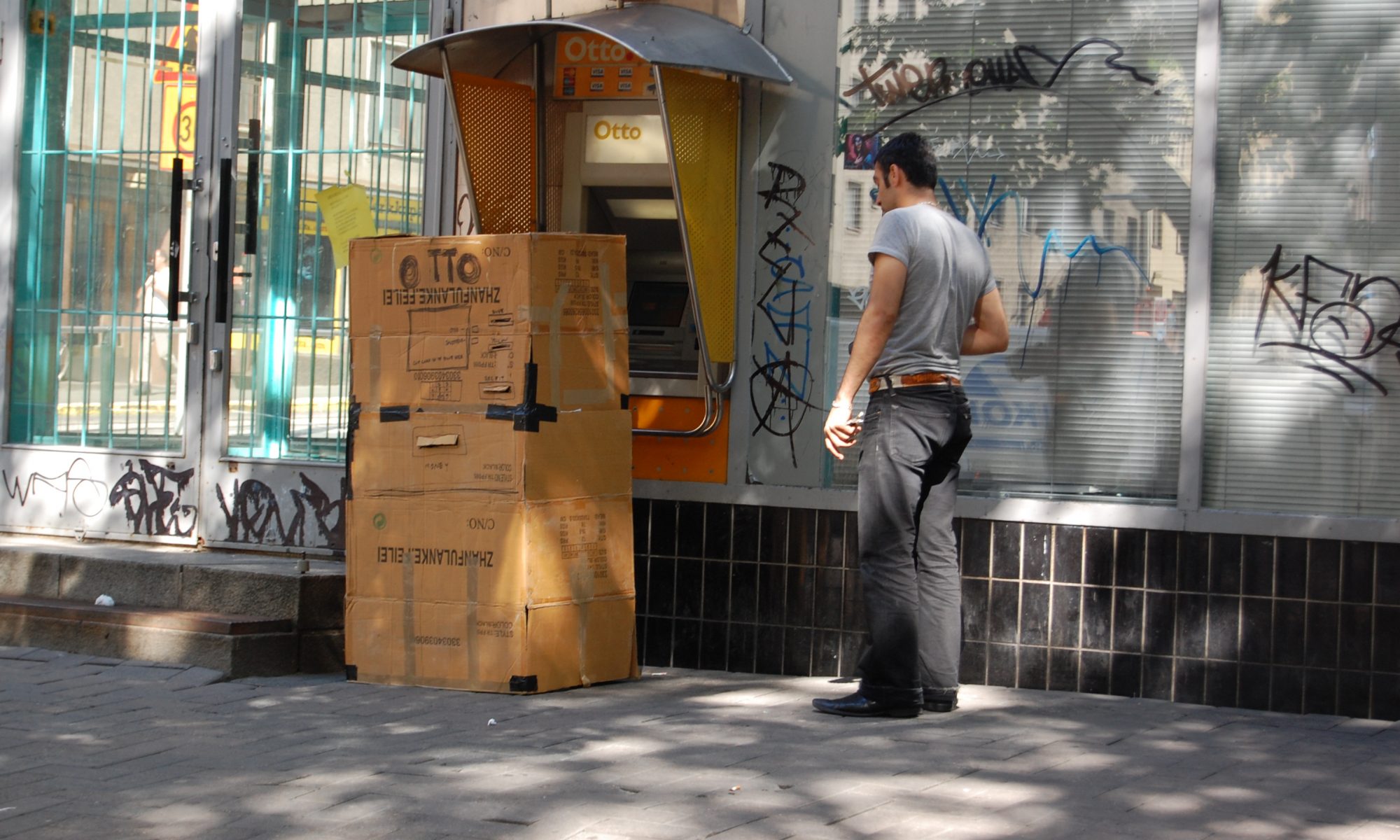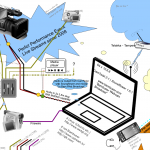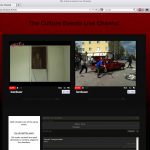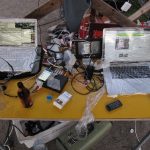p3rm46r4ff171 carvings have been executed successfully. Together with Jesse, we managed to produce a little above 45 tags to the Kannistonkallio quarry. Most graffiti we worked on was at ground level, some were reached by climbing and others from the top of the hill. Sizes varied, most text and images being below a meter in heigh and spanning one to three meters. We used mostly chisels and a few outlines were made with an angle grinder. Some stylistic experiments with steel rods were made too. We are currently preparing to print an image of the graffiti for the Performing the Fringe exhibition. There is also a plan to publish some teasers on the Pori Art Museum instagram. Here is a low resolution video showing highlights. Music is by tyops.
Ruosniemi hills are located 7km north-east from the Pori centre. There are a few Bronze Age constructions in the area such as the Ruosniemi metsasarat burial mounts. A corner of the hills called Kannistonkallio (38m high) was established as a quarry in the 1920ties. Granite from the site was used for the construction of the Pori bridge (completed in 1926). During the Continuation War German troops operating in Finland forced Soviet war prisoners to work the mine and to produce material for an expansion of the Pori Airport. After the war the quarry was used by the city for producing gravel and an entrepreneur manufactured pavement at the site. Local kids stole dynamite from the quarry storages and practised ski jumping on the hills.
Some time in the 80ties the pit which the mining operations produced filled with water and became a popular swimming site. The pond is known as “Ankkalampi” (Duckpond) and it is believed that the water seeps from a groundwater source. Crabs and fish have been planted to the pond. The quarry is mentioned in the Geological Survey of Finland database and photographs of the Ruosniemen sepelilouhos are dated to before 1996. Some texts in the current graffiti date the writings to 1987. Illustrations and texts are spread along the over 100m long hill edge. In 2018 a pair entrepreneurs established a outdoor centre called FinnDome to the site. FinnDome houses guest in dome-shelters close to the pond.
The selection of graffiti we engraved was based on intuition and we worked independently to cover the vast area. Initially I was inspired to engrave texts which were made to hard to reach locations. Engraving text to hard to reach spots was a way of connecting with the original authors. In some cases I didn’t engrave texts because the spot had required tremendous courage to reach. I wanted to leave them undisturbed. The majority of the texts we wrote are names and nicknames like ana, anzu, eero, erno, hanna, lepis, limppu, miia, niina, riikka, tero and so on. There was a considerable amount of love confessions and some like emmi <3 samppa got engraved. Others were left untouched because fading-love can be a beautiful process.
Looking at photos from the site most of the graffiti we engraved were written in plain handwriting and a significant portion are names of girls. We were also motivated in engraving asemic utters like pippui, oky-mus-porkka and odd illustrations. Some might have initially been parts of longer texts which had eroded over time. Some focus was also given to proto-global graffiti signs such as zeni, zlim and hamp. These sound like something kids born in the eighties might imagine rappers saying (I threw a tag which read zikke around -93, it was written so that it could be read as zakke and derived from my old name Sakke). The letter Z is exotic for the Finnish language.
We also engraved brand names such as hilux, bimmer (and possibly JAPA). In this context, it felt like the authors had written them as prays of sorts. Or perhaps social pressure had forced the authors to produce brand names instead of opinions. The shape of the quarry formed an opening with two distinct stages. The setting invited a dramatic reading of the original texts. It felt like the original authors had channeled deep feels. There were some crude markings and signs which showed that the authors had been working with their haterade, fears and desires. To reach some spots the authors have performed life-threatening climbs.
I think the audience we made this work for does not resite in our time. The audience we worked for occupies a beautiful ruin, where everything we currently posses has been assembled into piles. This landscape affords them novel tools which surface periodically from the ground. The tools are yielded for unimaginable purposes. I think this audience is what we have been working for when we’ve framed various Ore.e Ref. activities as an “archaeology of the future”. We investigate today as a remain and imagine our stuff from the perspective of an other intelligence. This speculative intelligence is not of our own invention. They are folk of the Pensastuulikansa (Bushwindpeople) as defined by Outi Heiskanen and they don’t live in a particular time. They merge occasionally in the form of good humour (with no joke).
Outi was a kid during the second world war and witnessed how scarcity turned her mother into a craftsperson. Outi’s mother could, for example manufacture soap from anything. Making “soap from anything” is the most innovative practice I can dream of. I think with Jesse, we imagine that the audience we are reaching out to, are folk who have developed mindsets, which afford them skills to use the tools and materials they discover from their surroundings, beyond the semiotic functions these items are currently assigned. A possibility for semiotic reconfigurations has been discussed before during the Performing the Fringe excursions and the process is presented as a core strategy of the Crusaders’ School of Pure Humour Without Joke.
Playing with semantic changes was typical of the Crusader School, as was the unclear delineation of events that grew out of one person’s spontaneous idea and was then developed and variegated by the entire community. In their openness – in terms of both authorship and chronological delimitation – they are happenings in the purest sense of the word, although this term is rarely applied to the Crusaders’ activities.
In our case, the folk of the Pensastuulikansa will be able to read the engravings and make sense or assign meaning to them.
The quarry can be found at Liitostie 92, Pori. 61.50567, 21.87771.





